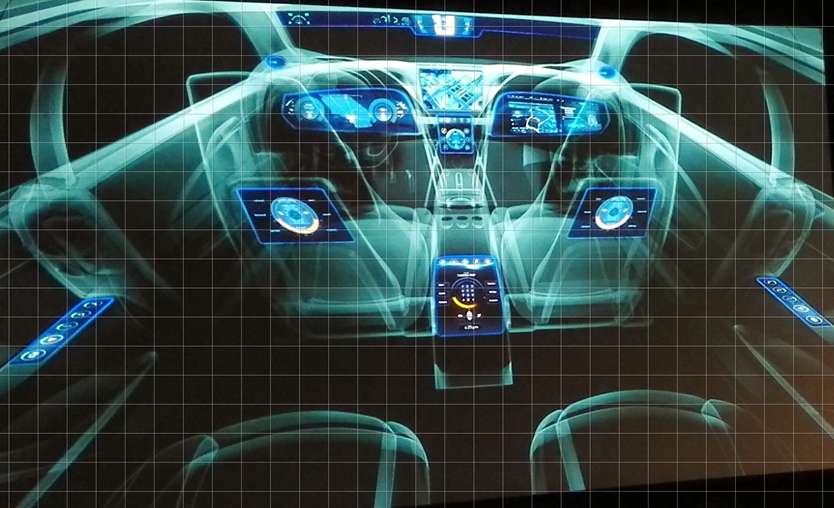Not content with being a graphics manufacturer, Nvidia turned their attention to moible and are now looking at the car with laser focus. At CES 2015, Nvidia predicted the number of pixels inside are car will dramatically grow from around 780,000 last year, to more than 20 Million by the year 2020. These pixels will spread across a wide range of displays and Nvidia even went as far as saying every surface in the vehicle could be a display, including your windscreen.
As we approach the day where driverless cars hit showrooms, it’s probably time we did consider how we’d use vehicles in different ways when our attention doesn’t need to be focused on the road.
Nvidia aren’t waiting for other companies to work it out, they’re surging ahead with new products that will power the vehicles of the future. Nvidia Drive CX is a full featured development environment that allows companies or developers to create 3D instrument clusters. This isn’t a rendered image which looks like a metal or carbon fibre, it’s a 3D model, full integrated into the vehicle data. This means when you put your foot on the accelerator, it’s rendering the speedometer in real time.
Naturally this has associations to what we’ve seen in games for years (or in the game-designed GTR instrument cluster from Nissan). Basically this will make you hate your existing, in-car displays. The possibilities are far reaching, well beyond the speedo and RPM. They also demonstrated what GPU capabilities can do for navigation. I can do ambient illumination of a 3D calculated map based on sensors around the cars.
Another bold prediction from Nvidia is that the fastest processor in your life won’t be in your PC or even your phone, it’ll be in your car. They say the current sensor/camera combined systems used to create safer assisted driving will be replaced by wide angle cameras. The footage from the cameras is then combined using software, which can then start us down the road of predictive algorithms to get the car driving itself.
Nvidia showed off a lot of what we’ve seen already from other manufacturers working on driverless, but they went further, showing auto-valet. This technology parks the car in a carkpark, and retrieves it, without the need of a valet. Time to start looking for a new job if that’s your current occupation.
It was an impressive set of announcements from Nvidia, but the biggest challenge they have in front of them is getting manufacturers to adopt their platform. They had representatives from Audi on stage, so that’s all bar locked away that they’ll use Nvidia going forward, but with no other auto makers signed up, they’ve got their work cut out for them.


